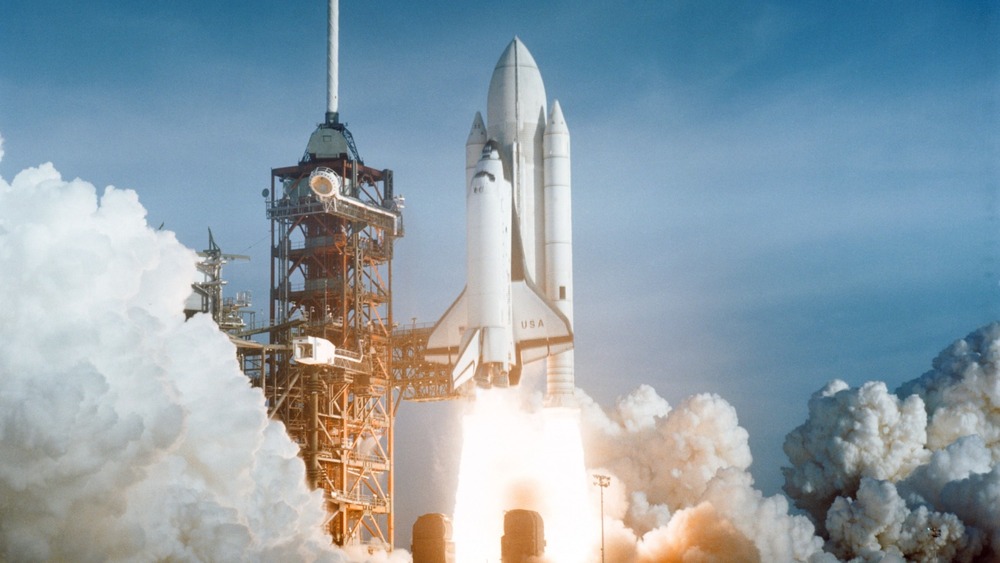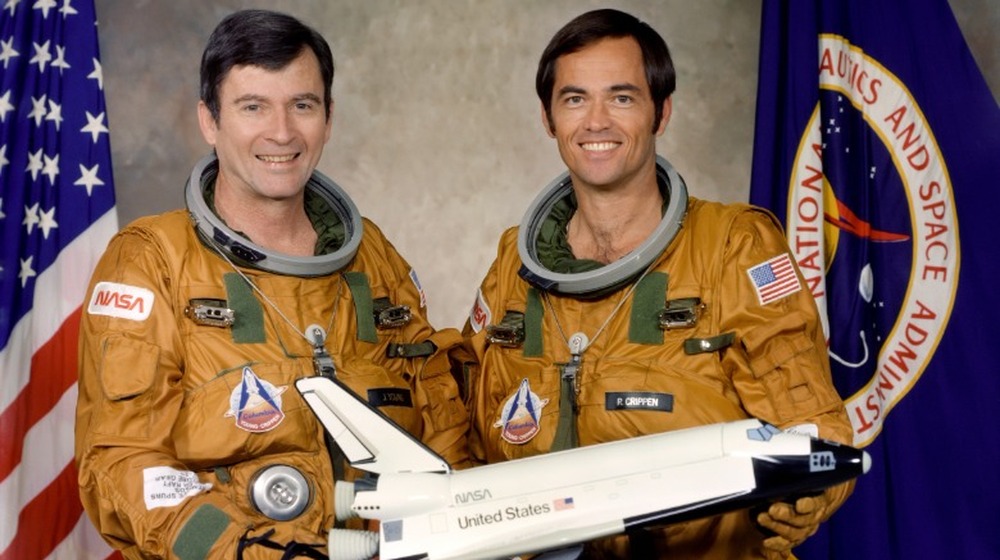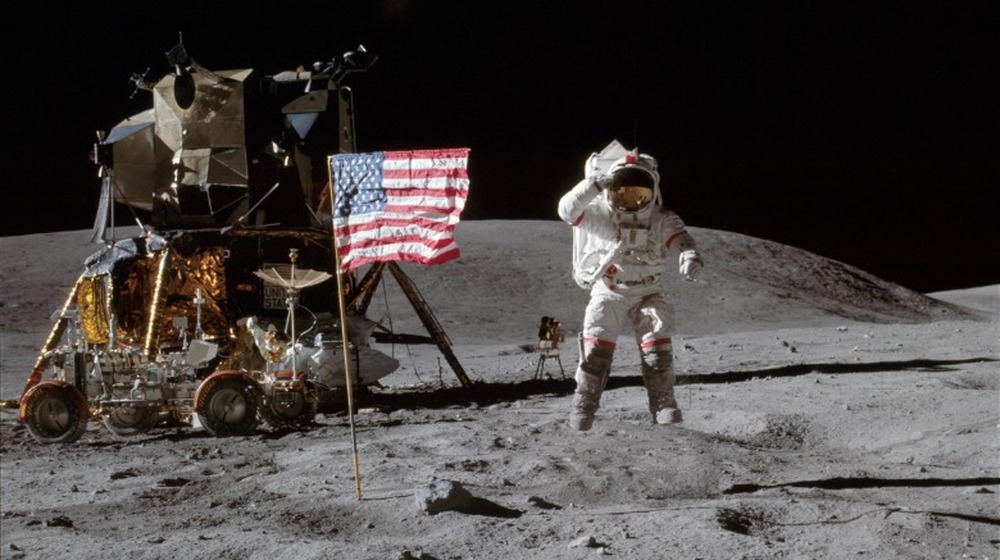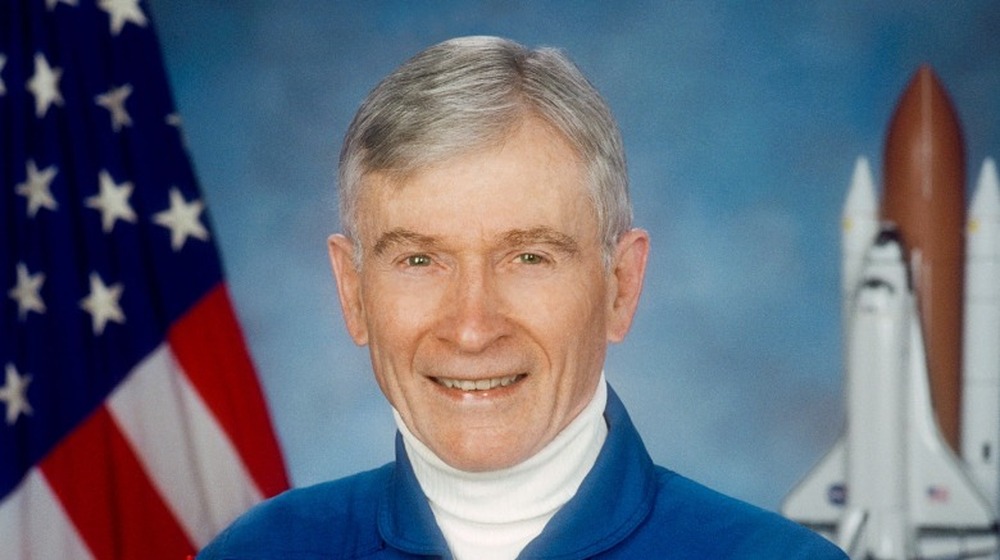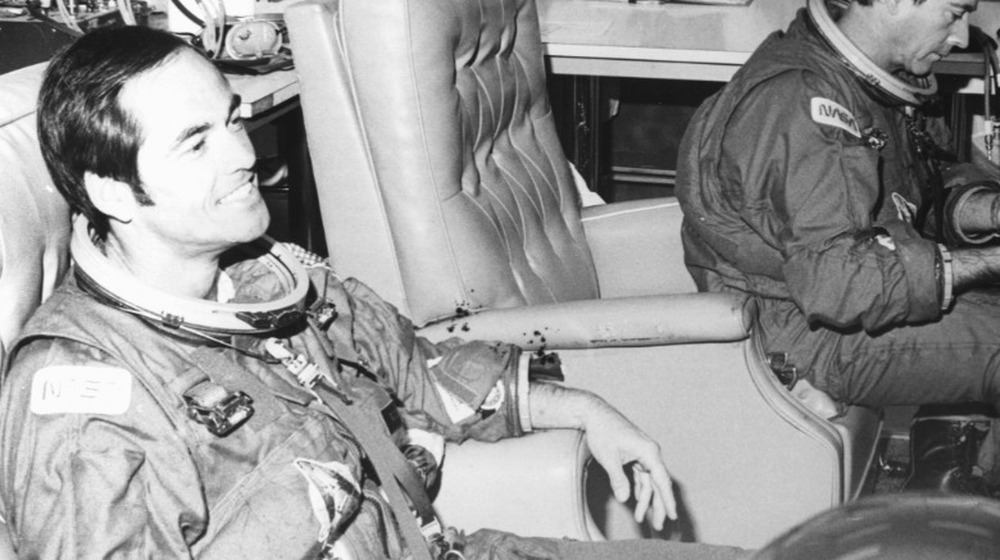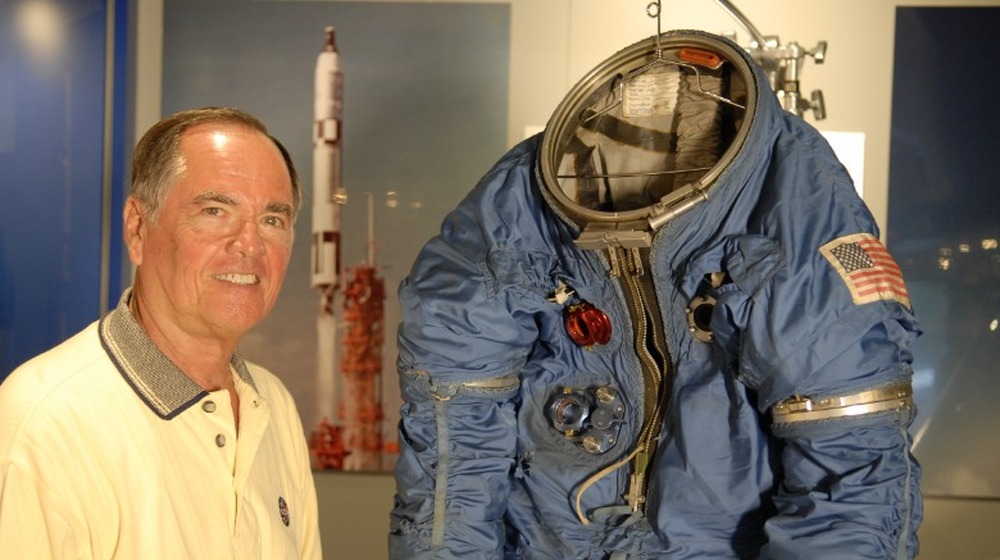What Happened To The Crew Of Columbia's First Space Mission?
On April 12, 1981, the world turned a page in the saga of human space exploration. The first flight of Space Shuttle Columbia launched into orbit from Florida's Kennedy Space Center. The shuttle revolutionized space flight, as it took off like a rocket, but was able to land like an airplane upon return, making it the first reusable spacecraft in human history. Also called the Space Transportation System, the flight was dubbed STS-1, and it would go on to fly 27 more missions before tragedy struck in 2003. As Space.com remembers, the shuttle broke apart over Texas upon re-entry, killing all seven crew members on board.
According to NASA, Columbia expanded our knowledge of the universe a number of groundbreaking ways. By 1983, it was equipped with Spacelab, an on-board laboratory in which astronauts could carry out a wide range of experiments. The shuttle's most important accomplishment, however, was undoubtedly the Chandra X-ray Observatory. Deployed in 1999 on STS-93, Chandra is still humanity's most powerful deep space X-ray telescope. Now, as NASA celebrates the 40th anniversary of Columbia's maiden voyage, let's take a look at the brave astronauts who piloted the groundbreaking spaceship and see what they went on to accomplish afterward.
The first Columbia space shuttle flight only carried a two-man crew
The crew of the first Columbia flight was made up of just two men. Commander John Young was a veteran of space flight. According to his official NASA bio, he had already gone to space four times before heading up STS-1. He had served as Spacecraft Commander on Apollo 16, which landed on the moon in April 1972. Young had the absolutely out-of-this-world experience of taking a joy ride on the lunar surface in a rover. He and the Apollo 16 crew explored the Descartes Highlands, set up equipment for scientific experiments and readings, and grabbed 200 pounds of moon rocks to take home to study. That rover is still up there, but it isn't among the strangest things NASA astronauts left on the moon.
For pilot Robert "Bob" Crippen, STS-1 was his first time in space. According to Britannica, his assignments on missions before the first Columbia flight were on the astronaut support crews for Skylab missions and the first-ever international crewed space mission, the Apollo-Soyuz Test Project. Both he and Young would go on to serve NASA in various ways, even after they retired from space flight.
John Young had a funny reputation at NASA
During his time as an astronaut, John Young made a name for himself at the administration as a bit of a wild card. According to The New York Times, he wasn't a stickler for the rules when he was younger. He famously boarded the Gemini 3 spacecraft with a contraband corned beef sandwich stowed away in his luggage. The NASA administrators weren't too happy about that one, as they feared crumbs from the sandwich could have damaged vital hardware in the spacecraft. Luckily, that eventuality never materialized, and the Gemini 3 mission was a shining success.
Young also committed the faux pas heard round the world. During his Apollo 16 mission to the moon, he apparently had imbibed more orange juice than his system was used to, and it made him a bit gassy. "I have the farts again. I got them again, Charlie," he can be heard complaining in the audio of his communications with mission control. Young also drops an F-bomb, and is heard saying, "Oh s***," when he most likely realizes what the guys in Houston go on to tell him. "Okay John. We have a hot mike," they say from Earth. "How long have we had that?" Young responds. Long enough, John. Long enough.
Young was a vocal critic of NASA's safety record and worked to improve it
Despite his devil-may-care attitude toward illicit sandwiches when he was younger, John Young actually went on to become an outspoken critic of NASA's safety record, and worked hard to try and improve it. According to Air & Space magazine, the catalyst for his public censure of the administration was the tragic explosion of the space shuttle Challenger on January 28, 1986. Young called the disaster "needless," and said that NASA had been advised about damaged parts on the shuttle but ignored the warning. "If the management system is not big enough to STOP the Space Shuttle Program whenever necessary to make Flight Safety corrections," he wrote in an internal memo a few weeks after the disaster, "it will NOT survive and neither will our three Space Shuttles or their flight crews."
An internal investigation confirmed Young's claims of what had gone wrong, but he angered NASA officials when the memo was leaked to the public, breaking administration policy forbidding astronauts from talking with the media. Young was grounded and given an office job. Still, he advocated for stricter safety protocols and humanity's return to the moon for the rest of his career. When he retired in 2004, his STS-1 crewmate Bob Crippen joked that the administration had file cabinets full of his "Safety-Grams." John Young died on January 5, 2018. He was 87.
STS-1 was Bob Crippen's first trip into space
Bob Crippen had been waiting a while to get his chance to go up into outer space. As The New York Times reported the day after he and Young launched, Crippen had been an astronaut for 15 years before finally going into orbit. Still, he took the years in stride. He waited patiently while his future STS-1 commander did doughnuts and released gases on the moon. The paper postulated that if the STS-1 flight was a success, which it was, that Crippen would have a leg-up over other astronauts, since he'd had so much to do with the design of the shuttle program. ”John and I have a lot of ourselves invested in the vehicle,” said Crippen. ”He and I have been working on the space shuttle for a long time and have had an opportunity to bring it from some of its conceptions on pieces of paper right through the final stages of tests.”
The Times' prediction turned out to be true, for NASA put Crippen on the crews of several other space shuttle missions. There are three other STS flights listed on his NASA bio. His last trip into space was on Challenger in 1984. According to NBC News, Crippen and fellow veteran shuttle pilot Bob Overmyer were put in charge of recovering the remains of the fallen crew members of the Challenger disaster in 1986.
Crippen continued to work with space shuttles, even in the private sector
Crippen served NASA in several other administrative positions, finally ending his career with the administration as the Director of the Kennedy Space Center in 1995. He told the Johnson Space Center Oral History Project in 2006 that his motivation for leaving NASA was largely financial. He said that he didn't think he could retire comfortably on a government salary, so he looked for opportunities in the private sector. He first went to the aerospace and defense company Lockheed Martin Corporation, where he worked on military simulations. But it appears as though his destiny was to work with space shuttles, as he ended up going to Thiokol, a company that made rubber and other chemical products for use on the shuttles. He retired from Thiokol in 2001
Alas, tragedy was once again in store for the program Crippen helped pioneer. On February 1, 2003, the other shuttle that Crippen had piloted during his career suffered a similar fate to Challenger's. The Space Shuttle Columbia, which had flown 27 successful space flights, exploded upon re-entry. "It was tough," Crippen said about hearing the sad news. "I had hoped it was never going to happen again, although I did know the possibility was there." Crippen was asked to take part in the disaster response efforts, but respectfully declined. It had been hard enough to deal with the Challenger disaster, and he couldn't go through that again.
